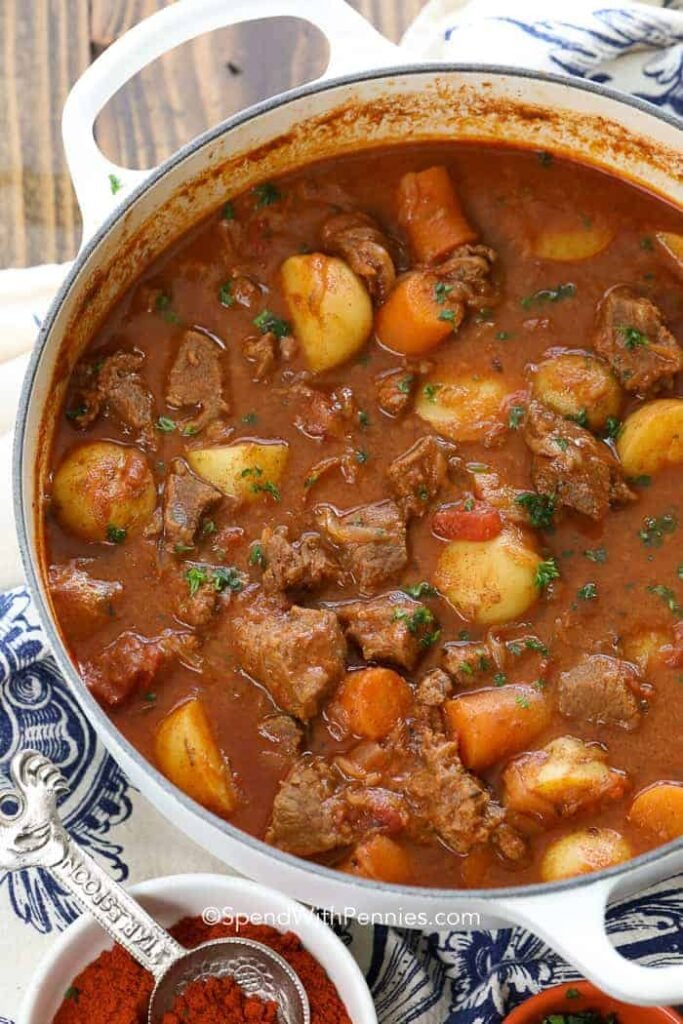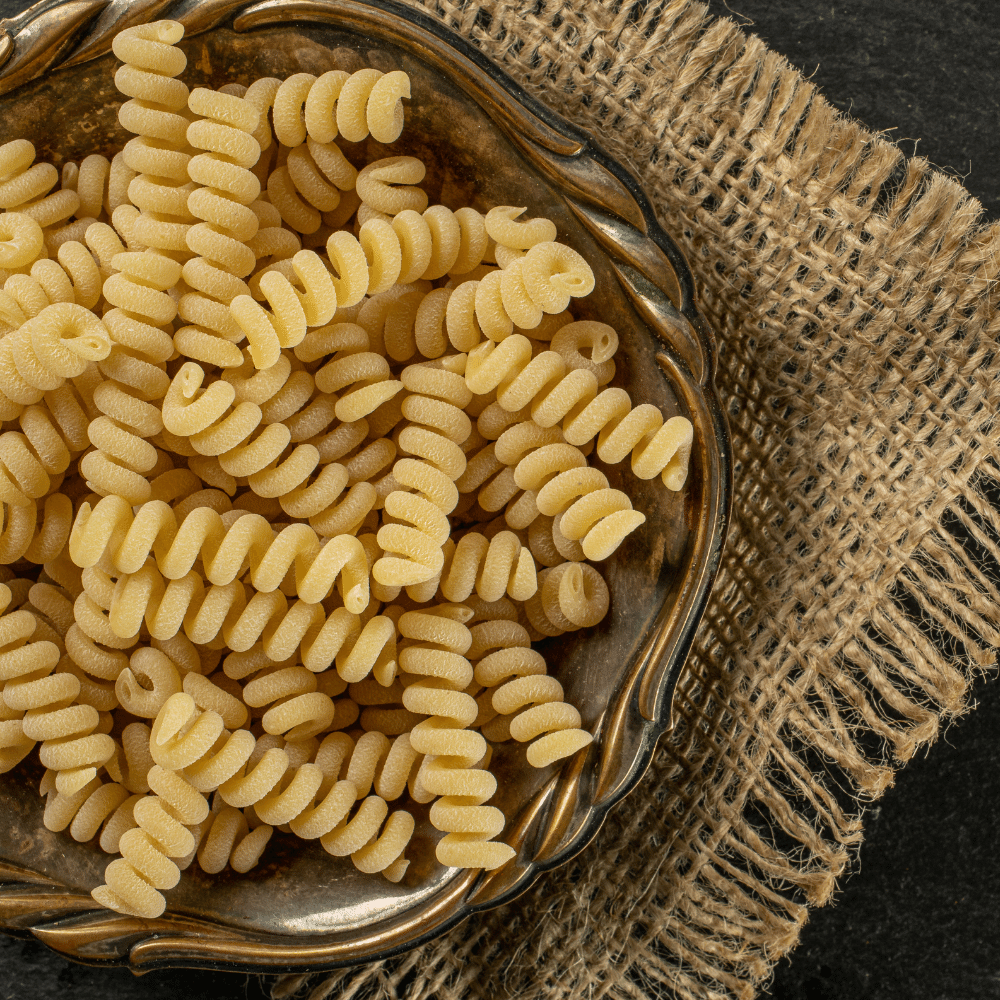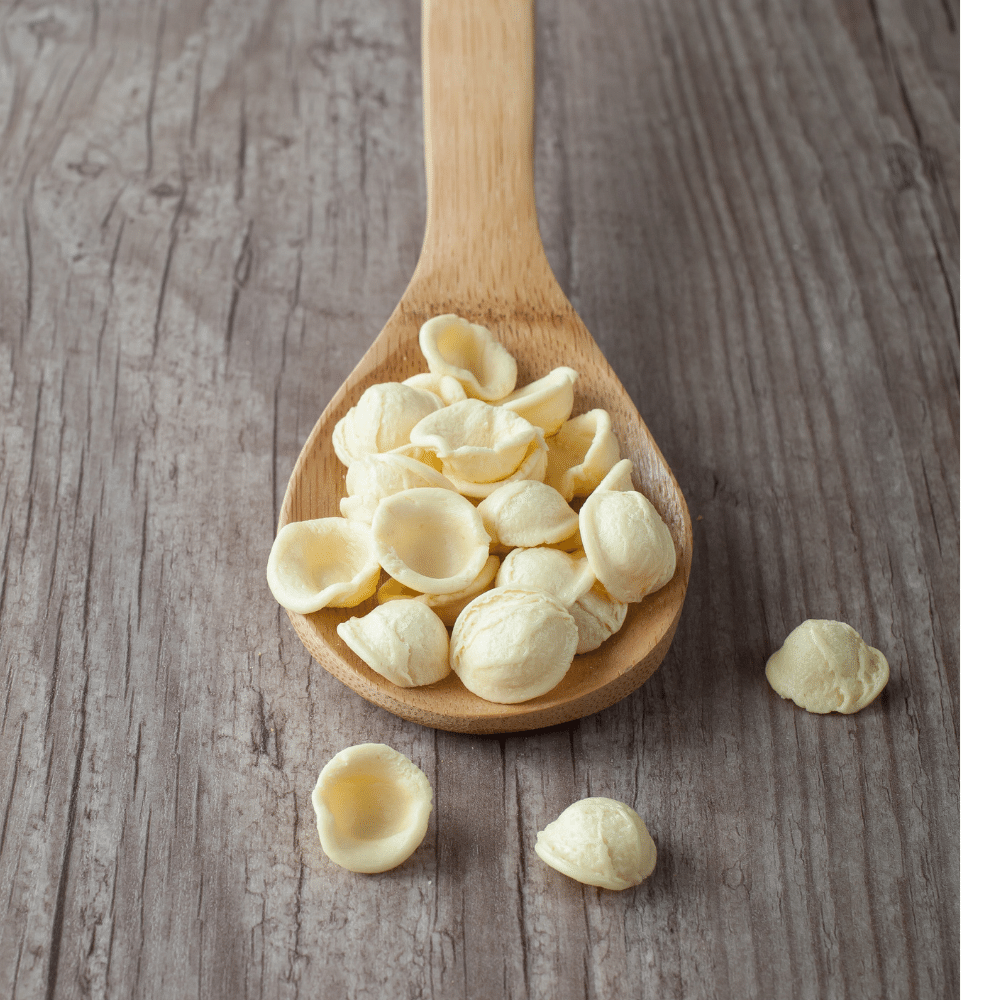Goulash is a classic Hungarian dish that has become popular all over the world.
It’s easy to make and can be adapted to suit any taste, making it perfect for family dinners or potlucks.
The key ingredient in goulash is pasta, which helps thicken the sauce and adds texture to the dish.
But not all pastas are created equal – some types of pasta work better than others in goulash.
In this article, I will discuss five of the best kinds of pasta for goulash so you can get the most out of your meal.
Read Also:
What is Goulash?

Goulash is a traditional Hungarian stew that has become popular in many countries around the world.
It typically consists of beef or pork, vegetables such as onions and peppers, and spices like paprika, caraway seeds, garlic, and bay leaves.
The meat is usually cut into cubes or strips before being cooked with the other ingredients in a large pot over low heat for several hours until it is tender.
Goulash can also be made with chicken or fish instead of beef or pork.
Goulash is often served with potatoes or noodles on the side but can also be enjoyed alone as a hearty soup-like dish.
It’s an incredibly versatile meal that can be adapted to suit different tastes by adding more vegetables (such as mushrooms) or changing up the spices used (for example using cumin instead of caraway).
Goulash is usually served hot but can also be eaten cold if desired.
The 5 Best Kinds of Pasta for Goulash
To ensure your goulash has the perfect texture and flavor, here are five types of pasta you should consider using:
1. Fusilli

Fusilli is a type of pasta that is shaped like a corkscrew or spiral.
It can be made from different types of flour, including wheat, semolina, and durum.
The shape of the pasta helps it to hold sauces and other ingredients better than other types of pasta.
- Varieties: Fusilli comes in many varieties such as whole-wheat fusilli, gluten-free fusilli, and even colored versions like spinach fusilli or squid ink fusilli. You can also find short cut versions such as mini-fusilli or long cut versions like bucatini which are similar to spaghetti but with a hollow center.
- Sides: When making goulash with fusilli, you’ll want to choose sides that will complement the dish’s flavors and textures. Roasted vegetables are always a great option; try roasting carrots, bell peppers, onions, and mushrooms for an added layer of flavor. A simple green salad dressed with olive oil and lemon juice makes for a light side dish that won’t overpower the goulash’s flavors. For something heartier on the side try adding some crusty bread or garlic toast to soak up all those delicious juices!
2. Rigatoni

Rigatoni is a type of pasta that is tubular in shape with ridges along the sides.
It’s larger than penne and ziti, but smaller than mostaccioli.
The ridges help to hold sauces and other ingredients, making it an ideal choice for dishes like goulash.
- Varieties: There are many varieties of rigatoni available, including whole wheat, gluten-free, spinach-flavored, and even squid ink versions. You can also find different shapes such as elbow macaroni or shells which work just as well in goulash recipes.
- Sides: Goulash made with rigatoni pairs nicely with a variety of side dishes such as roasted vegetables or a simple salad. If you’re looking for something heartier, try adding some crusty bread on the side to soak up all the delicious sauce from your goulash!
3. Elbow macaroni

Elbow macaroni is a type of pasta that is shaped like an elbow and is one of the most popular types of pasta.
It’s often used in dishes such as macaroni and cheese, goulash, and other casseroles.
The shape makes it easy to scoop up sauces or gravies, making it a great choice for hearty dishes.
- Varieties: Elbow macaroni comes in several varieties including whole wheat, gluten-free, and enriched versions. Whole wheat elbows are made with whole grain flour which adds more fiber to your dish than regular white flour elbows. Gluten-free elbows are made with rice flour instead of wheat so they can be enjoyed by those who have gluten sensitivities or allergies. Enriched elbows contain added vitamins and minerals such as iron and B vitamins for extra nutrition.
- Sides: Elbow macaroni pairs well with many sides such as steamed vegetables, salads, roasted potatoes, garlic bread or rolls, and even fruit salad! You can also top your goulash with grated cheese or crumbled bacon for an extra flavor boost.
4. Orecchiette

Orecchiette is a type of pasta that originated in the Puglia region of Italy.
The name comes from the Italian word for “little ear” because the shape resembles a small ear.
It’s made with durum wheat semolina and water, and it has a slightly chewy texture when cooked.
- Varieties: Orecchiette can be found in both dried and fresh forms, but they are most commonly sold as dried pasta. You can also find orecchiette flavored with spinach or tomato, which adds color to dishes like goulash.
- Preparation: To prepare orecchiette for goulash, bring a pot of salted water to a boil over high heat and add the orecchiette. Cook until al dente (about 10 minutes) then drain and set aside. In a separate pan, sauté onions, garlic, bell peppers, tomatoes, paprika powder and other spices until fragrant before adding your cooked orecchiette to the mix along with some beef broth or vegetable stock for extra flavor. Simmer everything together until heated through before serving hot!
5. Farfalle (bowtie)

Farfalle is a type of pasta that is shaped like bowties or butterflies.
It comes in different sizes, from the small farfalline to the large farfalloni.
The name “farfalle” means “butterflies” in Italian and it is also known as “bow-tie pasta” due to its shape.
- Varieties: Farfalle can be made with various types of flour, including semolina, durum wheat, and whole wheat. The most common variety is made with durum wheat flour and water; however, some manufacturers add egg yolks for a richer flavor and texture. There are also flavored varieties available such as spinach or tomato farfalle which have added ingredients such as spinach puree or tomato paste for extra flavor.
- Preparation: Farfalle cooks quickly so it’s important to keep an eye on it while cooking so that it doesn’t become overcooked and mushy. To prepare farfalle, bring a pot of salted water to a boil then add the pasta and cook until al dente (about 8 minutes). Drain the cooked pasta then toss with your favorite sauce before serving.
Conclusion
In conclusion, there are many different types of pasta that can be used in goulash, each of which adds a unique flavor and texture to the dish.
The best kinds of pasta for goulash are fusilli, rigatoni, elbow macaroni, orecchiette, and farfalle (bowtie). Each of these pastas is a great choice for goulash, as they all have the perfect texture and flavor to absorb all the delicious flavors of the dish.
So, if you’re looking for a delicious way to enjoy goulash, be sure to try one of these five kinds of pasta for a truly tantalizing experience.

The 5 Best Kinds of Pasta for Goulash
Ingredients
- Fusilli
- Rigatoni
- Elbow macaroni
- Orecchiette
- Farfalle
Instructions
- Pick your favorite type of pasta from this list to use in your goulash recipe.
- Prepare the rest of your meal, and enjoy!
Jenny has always been passionate about cooking, and she uses her platform to share her joy of food with others. Her recipes are easy to follow, and she loves giving tips and tricks to help others create their own unique culinary creations.

